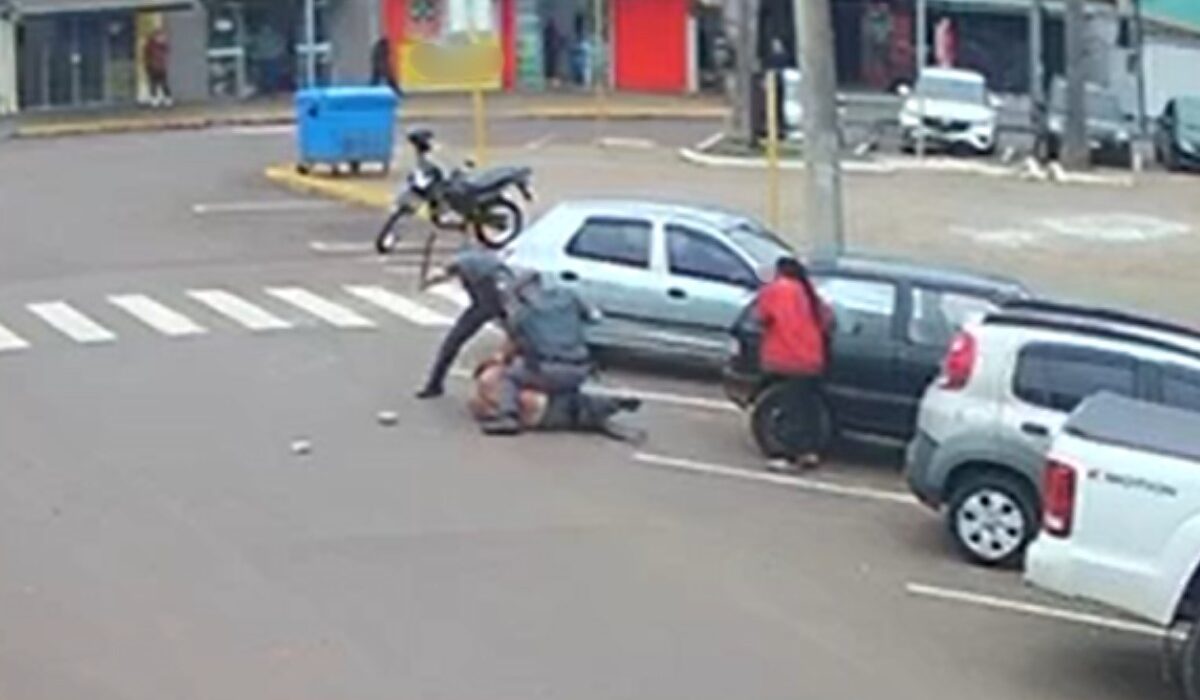In the bustling heart of Paranapanema, a small town in the interior of São Paulo, a routine afternoon took a disturbing turn. Police officers were caught on camera using a stun gun and physically assaulting a 26-year-old man in the main square, known as Praça da Matriz. The shocking incident unfolded amidst heated exchanges and escalating tensions, captured by a vigilant security camera that documented the unfolding drama.
The video footage reveals a tense confrontation as the man engages in a verbal altercation with the police, blatantly disregarding their commands to release whatever object he was holding. In a sudden attempt to evade the officers, he is swiftly struck by the incapacitating force of the stun gun. Subsequently falling to the ground, the man resists the officers’ attempts to subdue him. What follows is a distressing scene as one of the policemen relentlessly strikes him with a baton, even after he is already prone on the pavement.
During the altercation, the officers can be heard commanding the man to “stop, stop… and lie down,” while threatening to administer another shock, which they promptly carry out.
Minutes later, a police vehicle arrives at the scene to effect the man’s arrest. According to the official report, the officers justified their actions by claiming that the location was notorious for petty thefts and drug trafficking, alleging that the man was brandishing bricks, posing a threat to hurl them. They asserted that the level of force used was commensurate with the resistance they encountered. Notably missing from their account, however, was any mention of the baton strikes inflicted on the man.
Following the altercation, the man was transported to the hospital for a thorough medical examination before being released. The incident was formally documented as a case of resistance and disobedience. In response to the public outcry sparked by the video, the State Public Security Secretary assured that the Military Police was reviewing the footage and would take appropriate actions. Emphasizing a zero-tolerance policy towards misconduct, the institution pledged to mete out severe penalties for any transgressions committed by its personnel.
The case has also been taken up by the local police authorities in Paranapanema for further investigation, shedding light on the broader implications of police conduct and accountability.
This unsettling episode serves as a stark reminder of the complex dynamics at play within law enforcement and the delicate balance between maintaining public order and respecting individual rights. As the community grapples with the aftermath of this incident, questions of police protocol, use of force, and accountability come to the fore, prompting a critical examination of the systems in place to ensure transparency and justice.
Amidst the ongoing scrutiny and calls for accountability, this incident underscores the need for continuous evaluation and improvement within law enforcement agencies to uphold the principles of fairness, integrity, and public trust. The repercussions of this encounter reverberate beyond the confines of Paranapanema, resonating with broader conversations on police conduct, community relations, and the pursuit of justice in a democratic society.
In the wake of this troubling event, a profound reflection on the responsibilities and challenges facing law enforcement emerges, underscoring the imperative of fostering a culture of accountability, transparency, and respect for human rights. As the investigation unfolds and the repercussions ripple through the community, the quest for justice and reform remains a pressing concern, demanding a concerted effort to uphold the values of equity, integrity, and dignity for all.

